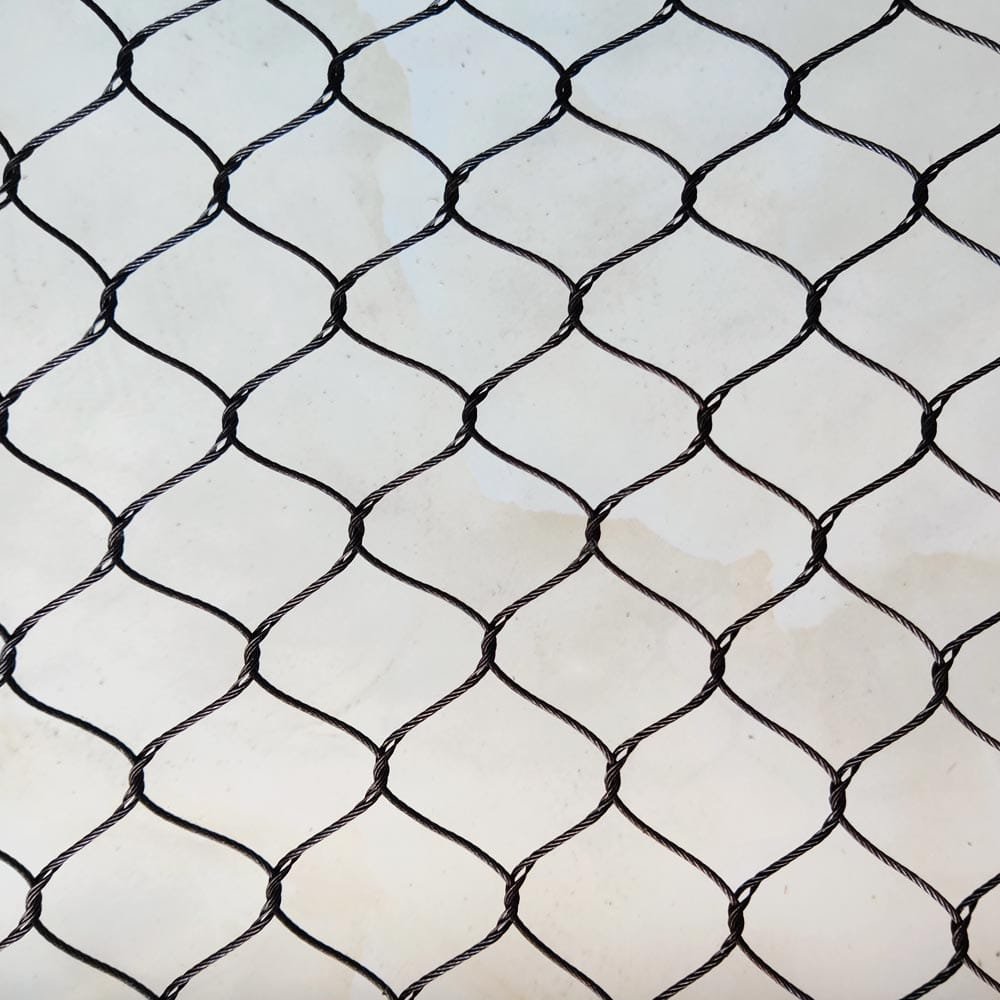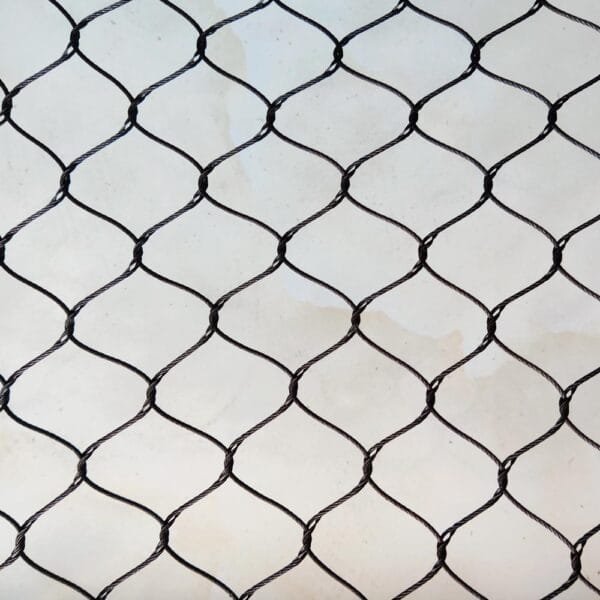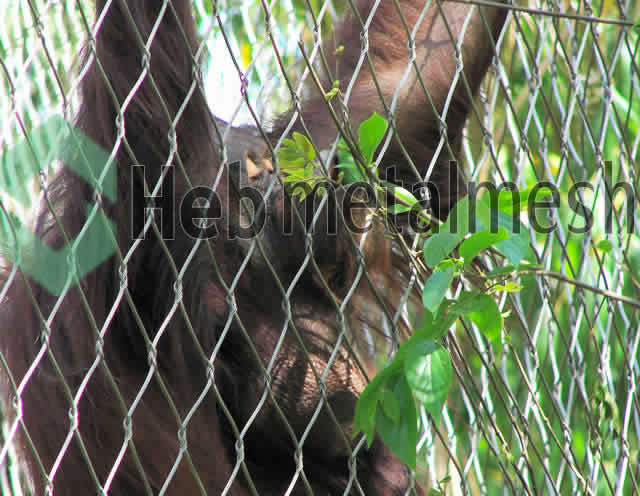Introduction to Bird Netting Roofs
Bird netting roofs have emerged as an essential solution for protecting crops, livestock, and ornamental plants from potential damage caused by various bird species. As agricultural practices and horticultural endeavors expand, the need for efficient protective measures grows increasingly important. Bird netting offers a practical approach to safeguarding gardens, aviaries, and farms against the often-destructive feeding habits of birds. By creating a physical barrier over designated areas, this innovative method effectively minimizes bird-related losses.
One of the key advantages of bird netting roofs is that they provide protection without harming wildlife. Traditional deterrents such as chemical repellents or electronic devices may not only be ineffective but could also pose hazards to the ecosystem. In contrast, bird netting roofs serve as a non-invasive alternative, allowing plants to thrive while ensuring that birds are kept at bay. This is particularly vital for farmers looking to preserve their crops and yield quality produce, as well as for gardeners who invest considerable time and resources into their ornamental collection.
Furthermore, the versatility of bird netting roofs makes them applicable in various settings. In commercial farming, netting can be employed over fruit orchards or vegetable fields to ward off birds during critical growing periods. Similarly, for enthusiasts managing aviaries, these roofs can offer protection while ensuring that flying creatures remain safe and contained within their designated environment. The aesthetic appeal of gardens can also be upheld, as the installation of bird nets can be done discreetly, thus not compromising the overall design.
In summation, bird netting roofs play a pivotal role in modern agricultural and horticultural practices, providing an effective and humane solution for protecting from avian damage. As we delve further into the specifics of bird netting, understanding its diverse applications will prove beneficial in making informed choices for optimal results.
Understanding Bird Netting Materials
The choice of material for a bird netting roof plays a crucial role in its overall performance, durability, and aesthetics. There are several options available in the market, with Hebmetalmesh wire rope mesh and stainless steel being among the most popular choices. Each of these materials offers distinct advantages that cater to different needs and preferences.
Hebmetalmesh wire rope mesh is renowned for its strength and flexibility, making it an ideal option for various applications, including gardens, aviaries, and farms. This type of bird netting can effectively withstand harsh weather conditions, ensuring longevity even in challenging environments. Its mesh structure allows for excellent light and air circulation, which can benefit both plant life and bird inhabitants. Additionally, the design can create a visual appeal by blending seamlessly with natural settings.
On the other hand, stainless steel bird netting is recognized for its exceptional durability. It resists rust and corrosion, which is particularly valuable in areas exposed to moisture or varied climatic conditions. The robust nature of stainless steel ensures that the netting remains intact over time, safeguarding gardens and aviaries from unwanted bird interference. Furthermore, its shiny surface can add an elegant touch to the landscape, appealing to those who prioritize aesthetics alongside functionality.
Ultimately, selecting the right material for a bird netting roof involves considering various factors, including the specific needs of the environment it will serve. Durability, strength, and aesthetic features must align with the intended purpose to ensure optimal results. By understanding the properties of the different materials available, individuals can make informed decisions that enhance both the performance and visual aspects of their bird netting solutions.
Why Choose Stainless Steel for Your Bird Netting Roof?
When considering materials for a bird netting roof, stainless steel stands out as an exceptional option due to its numerous advantageous properties. One of the primary benefits of stainless steel is its unparalleled strength. This robust material can withstand significant tension without compromising its structural integrity, making it an ideal choice for netting that must securely contain birds while allowing for airflow and sunlight in garden or aviary settings.
Simple filling the message to have a chance to win a free sample:
Moreover, stainless steel boasts impressive longevity, which is a crucial factor for anyone investing in bird netting roofs. Unlike other materials that may deteriorate over time, stainless steel offers exceptional resistance to corrosion and rust. This characteristic ensures that the netting remains functional and visually appealing, even when exposed to harsh weather conditions or outdoor elements. Consequently, a stainless steel bird netting roof can provide peace of mind, knowing that it will last for years without requiring frequent maintenance or replacement.
Environmental resistance isn’t just limited to corrosion; stainless steel is also impervious to UV rays, ensuring that the netting won’t become brittle or discolored due to sun exposure. This quality makes stainless steel an aesthetically pleasing option, as it maintains its appearance over time while effectively rendering the desired protection against intruding birds. Additionally, the material’s smooth surface makes it challenging for birds to perch, further enhancing the effectiveness of the bird netting roof in keeping unwanted avian visitors at bay.
Incorporating a stainless steel bird netting roof into your setup ultimately results in a blend of durability, style, and long-lasting performance that stands resilient against environmental factors. This combination of benefits positions stainless steel as a prime candidate for those looking to address bird-related issues effectively while enhancing their outdoor spaces.
When to Consider Bird Netting for Your Garden
Bird netting roofs serve as an effective and protective solution for gardens, particularly when seasonal bird activity poses significant risks to plants. Understanding the optimal times to install bird netting is crucial for maintaining the health and safety of your garden. Generally, the best time to set up bird netting is just before the growing season begins, usually in early spring. This timing ensures that your crops are safeguarded as they emerge, reducing the chance of damage from hungry birds that seek fresh seeds and tender shoots.
As the growing season continues, it is important to monitor the activity of local bird populations. Many birds are particularly active during the late spring and summer months, coinciding with peak harvest time for many fruits and vegetables. Therefore, extending the use of bird netting roofs during these months is highly beneficial, especially for crops that are susceptible to pecking and foraging. The installation of bird netting should be considered if you notice an increase in feathered visitors or if you are growing more delicate crops.
When selecting the appropriate design and mesh size for your bird netting roof, consider the types of plants you are protecting. A mesh size of 1 inch is usually ideal for smaller birds while larger birds may require be more effectively deterred with a 2-3 inch mesh. Furthermore, ensure that the netting is robust enough to withstand weather conditions, potentially incorporating frames or supports as needed to maintain its integrity. By timely employing bird netting tailored to your garden’s needs, you will maximize the protection of your plants and promote healthy growth without intrusion from unwanted avian pests.
Bird Netting Solutions for Aviaries
When considering bird netting roof solutions for aviaries, several specific requirements must be taken into account to ensure the safety and well-being of the birds. The primary consideration is the mesh size of the netting. A suitable mesh should be small enough to prevent the escape of birds, while also ensuring that it does not entrap them. Generally, a mesh size of 1/2 inch to 1 inch is recommended depending on the type of birds being housed; smaller mesh may be necessary for small species or fledglings.
Installation techniques play a crucial role in the effectiveness of the bird netting roof. It is essential to secure the net correctly to prevent sagging, which might create openings that birds can exploit. Proper tension should be applied across the surface of the roof, anchoring the net at various points. Furthermore, using UV-stabilized materials will ensure longevity and durability, protecting birds from potential environmental hazards like sun exposure.
Creating a visually appealing and safe environment within the aviary is also paramount. Birds thrive in natural habitats, and incorporating elements such as perches, plants, and even water features can enrich their living conditions. When designing your aviary, ensure that these features do not conflict with the bird netting roof. Strategic placement can provide both aesthetic beauty and functional utility, enabling birds to engage in natural behaviors while remaining secure and safe.
The choice of materials is equally important. Options include nylon, polyethylene, or polypropylene, each offering differing levels of strength and UV resistance. By thoughtfully considering these critical aspects, aviaries can successfully incorporate bird netting roofs that facilitate a beautiful and secure habitat for the birds, while minimizing the chances of accidental escapes or outside threats.
Protecting Your Farm with Bird Netting
Bird netting roofs serve as an essential protective measure for farms, effectively safeguarding livestock and crops from the potential hazards posed by avian populations. Farmers often face significant challenges due to bird-related damages, which can lead to substantial financial losses. A practical solution that has gained traction among agricultural professionals is the installation of bird netting, which acts as a barrier to prevent birds from accessing important resources.
For instance, consider a case study involving a vegetable farmer who struggled with consistent crop damage due to flocks of hungry birds. After installing a bird netting roof over his fields, he observed a remarkable decrease in the loss of produce. This not only improved his crop yield but also reduced the costs associated with labor for damage control. The installation of bird netting not only offered an effective solution but also ensured that the farmer could maintain organic growth by preventing birds from contaminating the soil with droppings.
Additionally, livestock protection is another critical aspect addressed by bird netting roofs. A poultry farmer, for example, realized he was losing valuable chicks to predatory birds. Upon implementing netting solutions above his chicken coops, he noted a significant decline in losses. This adjustment not only helped in ensuring the safety of the chickens but also contributed positively to the overall health and productivity of his farm. Farmers like him have shared that bird netting roofs have proven to be a sound investment—one that pays off in enhanced yields and livestock safety.
By adopting bird netting solutions, farmers can take proactive steps to protect their agricultural interests while also promoting a more sustainable farming practice. The versatility and effectiveness of bird netting roofs make them an indispensable component of modern agricultural strategies.
FAQs: Answering Your Bird Netting Roof Questions
As interest in bird netting roofs continues to rise, many potential buyers have numerous questions regarding their installation, maintenance, material choices, and overall effectiveness. This section addresses some of the most frequently asked questions to provide clarity and assurance.
One common inquiry revolves around the installation of a bird netting roof. Most netting systems are designed for straightforward DIY installation, with many products including comprehensive instructions. However, it is crucial to assess the location and specific requirements of your garden, aviary, or farm before commencing the installation. For larger or more complex structures, hiring a professional installer may be advisable to ensure optimal results.
Regarding maintenance, bird netting roofs are generally low-maintenance. Regular inspections are recommended to identify any potential tears or wear caused by environmental factors or birds. Routine cleaning is often sufficient, usually involving gentle rinsing with water to remove debris. Ensuring the bird netting roof remains in good condition will extend its lifespan and effectiveness.
When it comes to material choices, bird netting is available in various types, including polyethylene, polypropylene, and nylon. Each material offers unique benefits, such as UV resistance, durability, or specific weights and mesh sizes designed for different applications. It is essential to select a quality netting material that aligns with your specific needs to ensure maximum effectiveness against unwanted birds.
Effectiveness is another concern purchasers frequently express. A well-installed bird netting roof can significantly reduce bird intrusion, protecting plants, crops, and aviary inhabitants. Moreover, it is crucial to ensure that the netting is installed tightly, with no gaps, to prevent any birds from finding their way inside.
In summary, understanding the installation process, maintenance requirements, material options, and effectiveness of bird netting roofs can ease concerns for potential buyers. By educating yourself on these common queries, you can make a well-informed decision tailored to your specific needs and environment.
Tips for Installing Bird Netting Roofs
Installing a bird netting roof requires careful planning and execution to ensure its effectiveness in protecting your garden, aviary, or farm from unwanted avian visitors. First and foremost, it is crucial to select the right type of bird netting that suits your specific needs, such as lightweight options for vegetable gardens or stronger, more durable materials for larger aviaries. Once you have chosen the appropriate netting, gather the necessary tools, including scissors, measuring tape, heavy-duty zip ties, and a sturdy frame or structure for mounting the netting.
Commence the installation by measuring the area you wish to cover. It is vital to ensure that the netting covers the entire space without any gaps that birds could exploit, so account for overhangs and any support structures that may be present. Once your measurements are complete, cut the bird netting to size, leaving some extra material to secure it properly to prevent sagging or pulling away over time.
When attaching bird netting to your framework, begin at one edge and work your way across, using zip ties for secure fastening. If the netting is too loose, it may not provide adequate protection, while over-tightening can lead to tearing. Common pitfalls to avoid include failing to check for sharp edges on structures that may damage the netting and neglecting to ensure proper tension throughout the installation. It is also advisable to regularly inspect the netting post-installation, as wear and tear may arise due to environmental factors.
By following these guidelines, you can successfully install a bird netting roof that minimizes the risk of bird intrusion, allowing you to protect your plants or animals efficiently. The correct installation approach creates a reliable barrier, maintaining the safety and tranquility of your space.
Conclusion: Creating a Bird-Friendly Environment
In conclusion, the importance of implementing bird netting roofs cannot be overstated for anyone looking to create a suitable environment for birds while protecting gardens, aviaries, or farms from unwanted damage. As explored throughout this guide, bird netting offers a variety of benefits, including safeguarding crops and creating safe habitats for birds to thrive. With the right netting solutions in place, property owners can mitigate the risks associated with free-ranging birds while simultaneously providing a home for desired avian species.
When considering the installation of bird netting roofs, several factors should guide your decision-making process. It is crucial to assess the specific needs of your garden or aviary, including the types of birds you wish to attract, the size of the area to be covered, and the potential threats posed by pests or environmental conditions. Choosing high-quality materials that are durable, weather-resistant, and appropriately sized for the species you wish to protect will ultimately lead to a more effective solution.
Moreover, understanding the balance between humans and birds leads to a more harmonious relationship. Implementing bird netting roofs not only serves as a practical measure to shield crops and animals but also encourages a wider awareness of ecological preservation. This can be an educational opportunity for all involved, promoting the idea that coexistence with wildlife can be achieved through thoughtful planning and resource management.
In summary, bird netting roofs are essential components of any successful garden, aviary, or farm management strategy. By carefully considering individual needs and preferences, property owners can create welcoming spaces for birds, fostering biodiversity and enhancing the overall ecosystem. Embracing this approach will ultimately enrich both human experiences and the lives of the feathered inhabitants in our gardens and beyond.
1″ x 1″ Stainless Steel Mesh 25′ x 60′ Rolls Nature and Black
Material: stainless steel 304 Wire cable diameter: 3/64″, 1/16″ Mesh opening size: 1 inch x 1 inch Roll size: 25′ x 60′ Customized roll: available Color: Nature / Black Oxide Use for: Aviary netting, small bird, small parrots, small animal fencing



